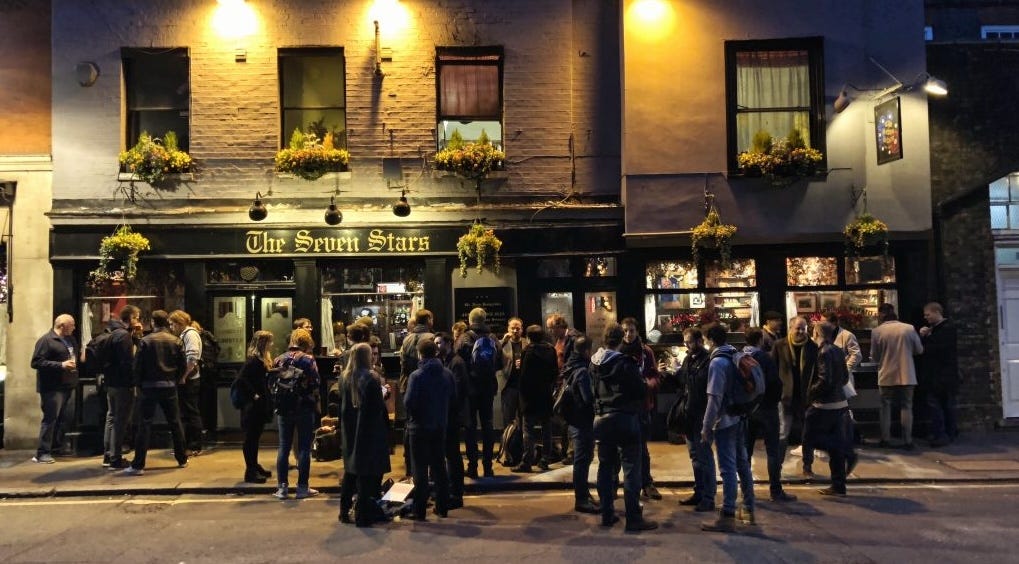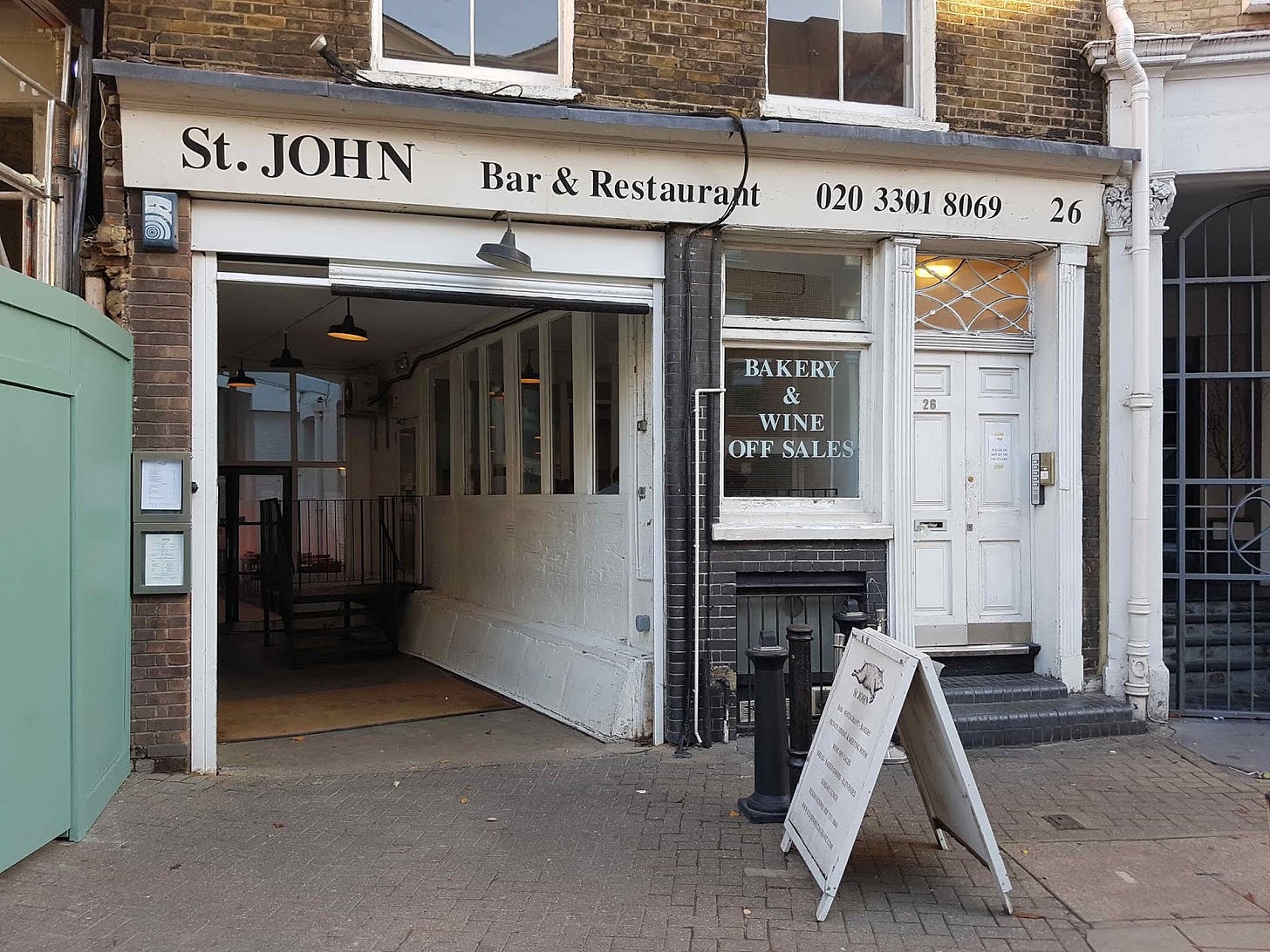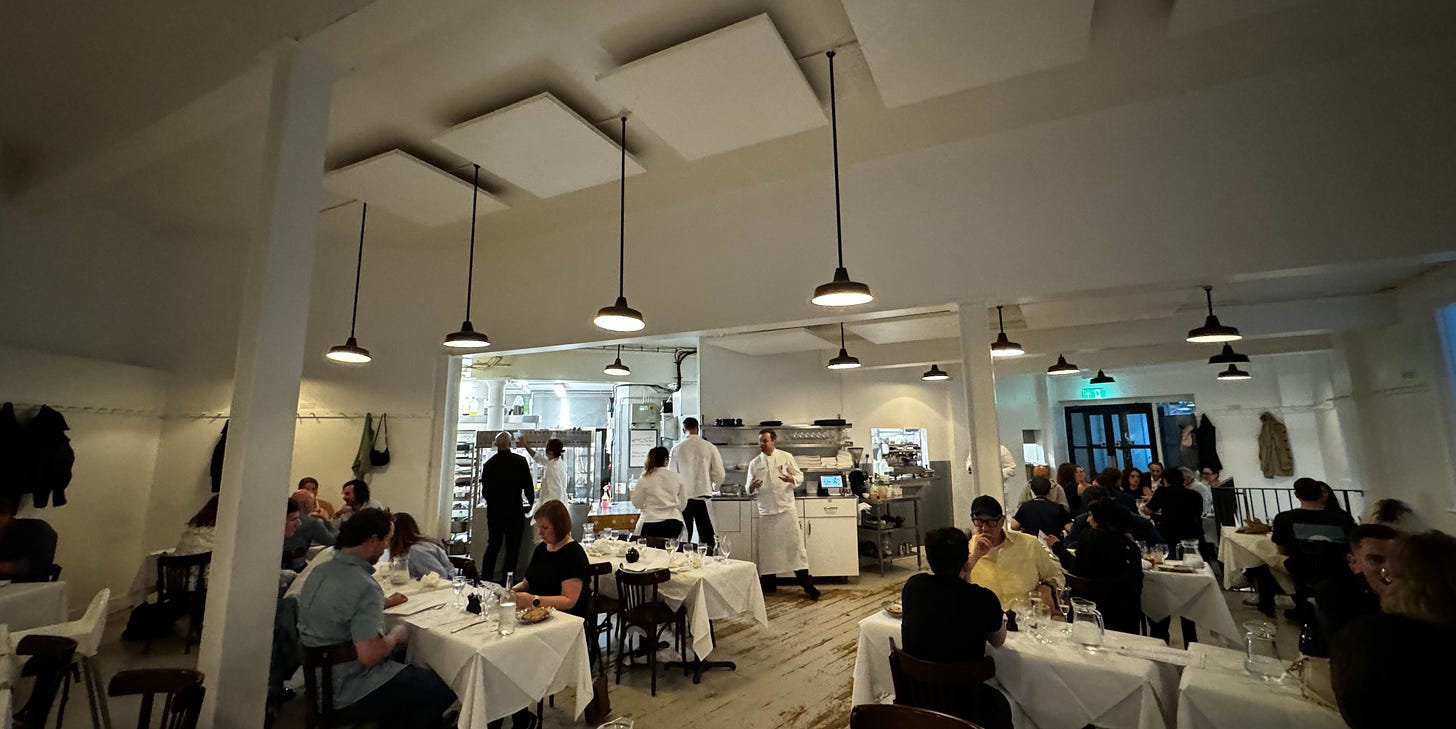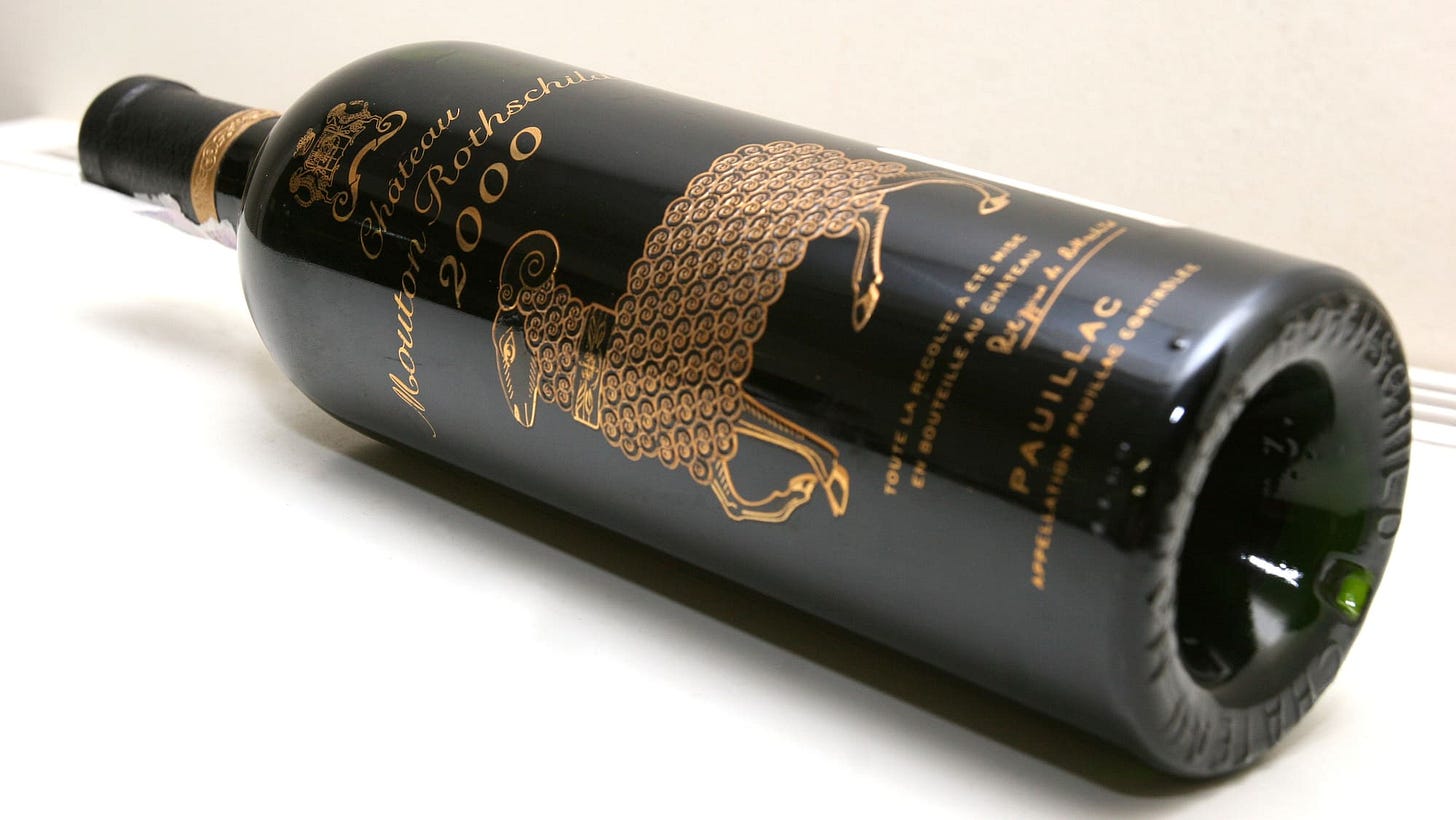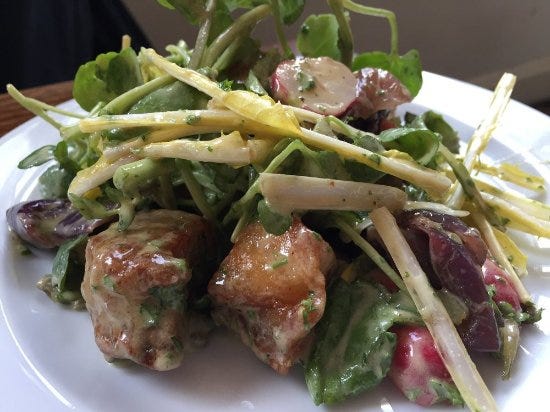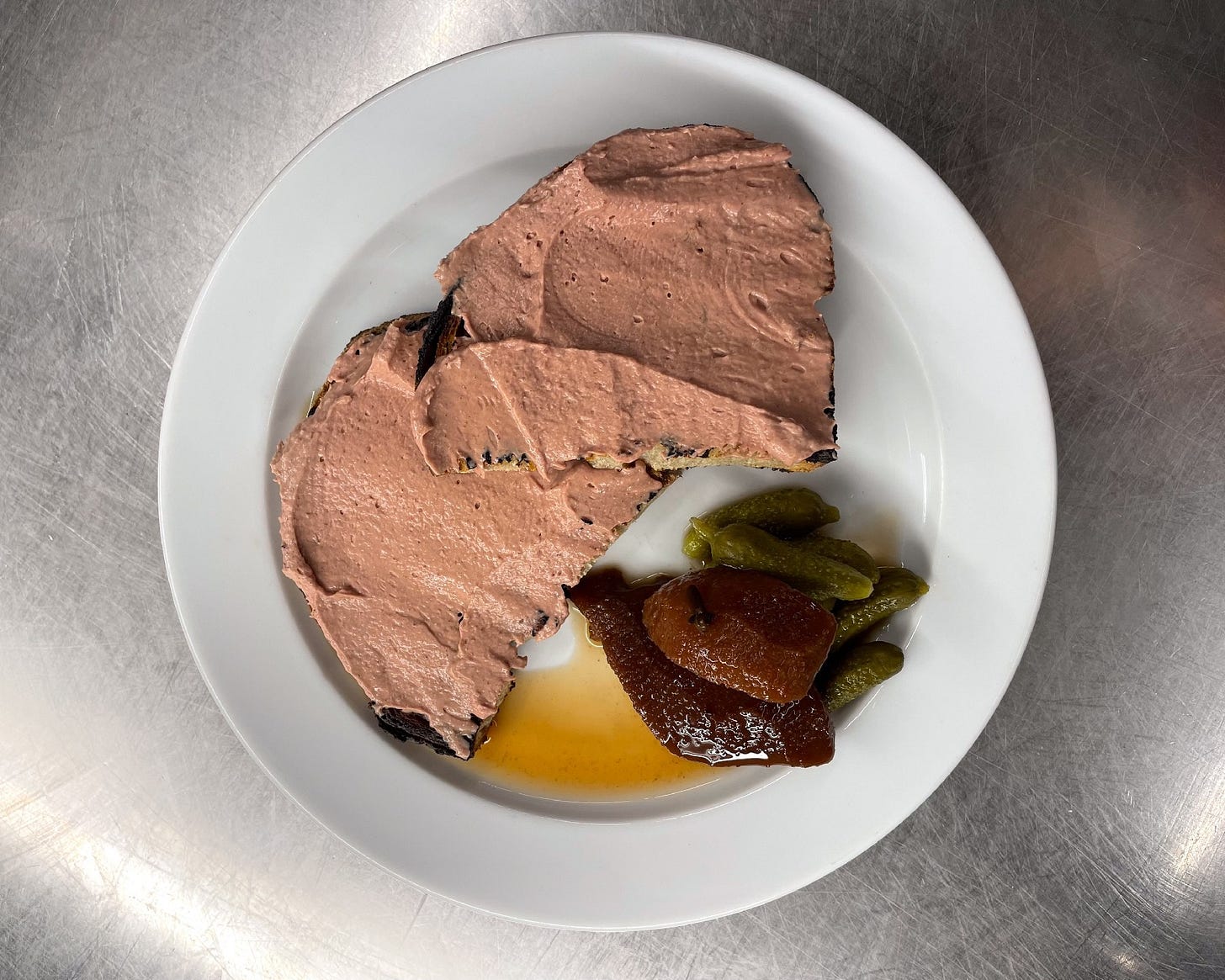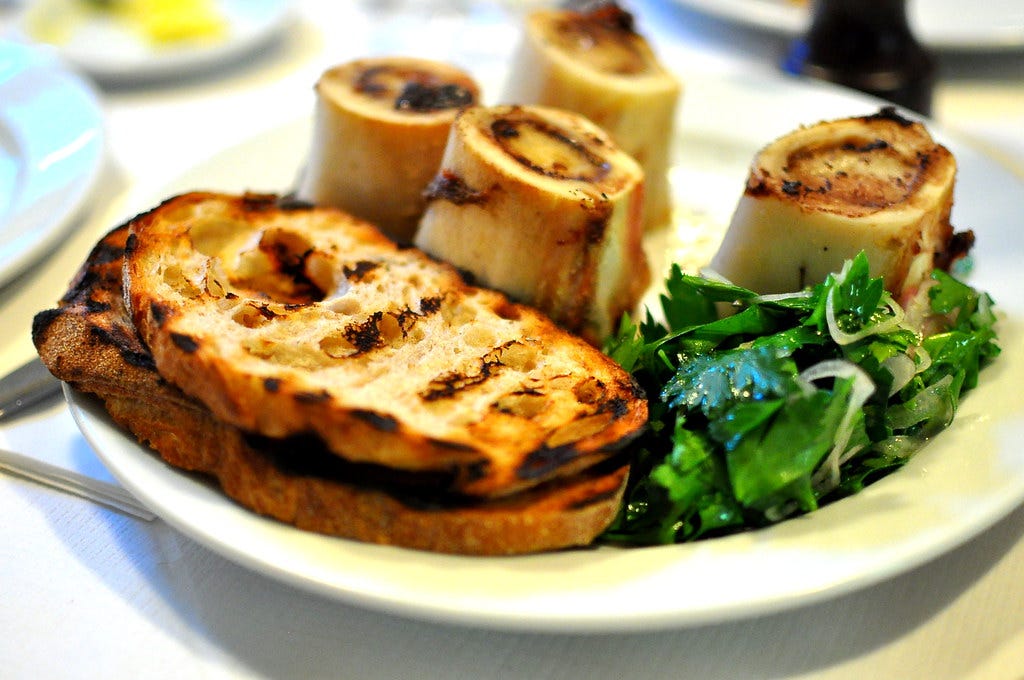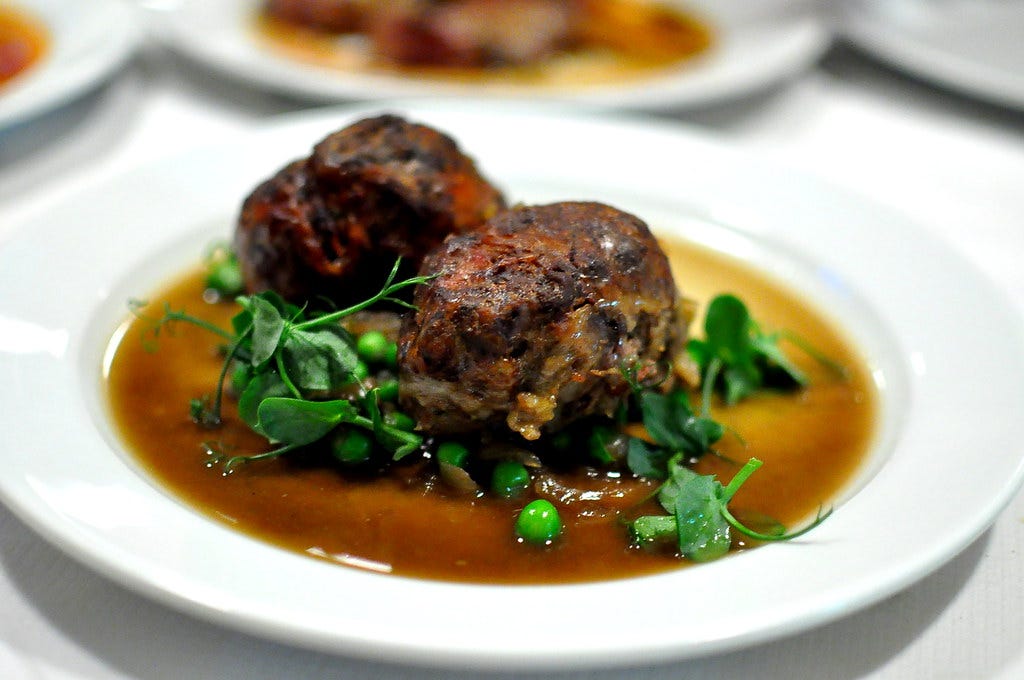Stepping Into St. John Was Like Entering A Culinary Cathedral
In this temple of gastronomy where the pig reigns supreme and every part of the beast is honored on the plate, you will leave feeling stuffed, amazed and deeply emotionally satisfied.
The sun dipped below the concrete horizon, casting a golden glow over the River Thames. I stood on Westminster Bridge, surrounded by history and the familiar scents of the city. The breeze off the water was a welcome reprieve, carrying with it the whispers of centuries past, the echoes of revolution and renaissance, the rise and fall of monarchies and the innovation of every new age. The Houses of Parliament loomed to my right, their gothic spires piercing the dusky sky, a testament to human ambition and the fight for representation. Below, the river glided with a serene, almost indifferent grace, as if mocking the chaos that it divided. This was London at its finest—raw, unapologetic, and achingly beautiful. The bridge itself, an architectural marvel of cast-iron arches and verdant green paint, standing as a silent witness to the ebb and flow of time, the rise and fall of leaders and standing the test of two world wars. Here, amidst the hum of traffic and the watchful gaze of the Elizabeth Tower, I felt the pulse of the city, a living, breathing entity that refused to be tamed. London was a story, one that unfolded with every step, every breath, every glance at the purple twilight sky.
London’s inky dusk settled over Big Ben, whose chimes echoed like a heartbeat through the city’s deep veins and tube channels. The iconic clock tower stood as a sentinel at Westminster, marking the start of my journey to Smithfield. I let go of the railing, turned and set my stride feeling the city’s rhythm in the soles of my shoes, the anticipation of dinner igniting a spark in my step. The Thames glistened under the fading sunlight, a liquid mirror reflecting the grandeur and grit of London. Tourists with cameras jostled for space, but I weaved through them, my mind already savoring the culinary adventure ahead. The riverbank was alive with the hum of conversation and the rowdy enjoyment of libations and food from riverside pubs. The air was saturated with the aroma of comfort food. Fried fish and chips mingled with the earthy scent of the flowing river creating a melange that was unique to London. I passed street performers whose melodies added a rhythm to my walk, a moving soundtrack to a city that was coming to life as the setting sun provided the venue. Music echoed against the sidewalk and stone walls as I passed, a blend of the familiar and the exotic. It created a narrative of the city’s story—its history, its diversity, its unyielding spirit. It was a sensory overload, but one that I welcome wholeheartedly as I moved through the crowds of people all standing and enjoying the performances that blended together with a sea of cheering and clapping.
Walking along the Thames is a journey through history and time. The architecture shifted from the stately Houses of Parliament to the sleek, modern lines of the Southbank Centre. The juxtaposition of old and new was always quintessentially in London's DNA. The Southbank’s brutalist concrete structures stood stark against the backdrop of the timeless river and were a testament to the city’s relentless evolution. I paused briefly to take in the view across the water to St. Paul’s Cathedral. The cathedral seemed to rise out of the concrete around it, its dome illuminated and majestic, was a beacon of resilience in the urban sprawl. Crossing the river at Blackfriars Bridge, I left behind the leisurely stroll of the Thames path and plunge into the bustling arteries of the city. Fleet Street beckoned, its storied past whispering through the cobblestones and through the alleys carving shortcuts and bypasses to the crowded street. Once the heart of Britain’s newspaper industry, the area was now a mix of old pubs and modern office buildings. You could literally feel the history here. The ghosts of journalists past seem to walk beside me, their legacy etched into the very fabric of the street. Fleet Street’s energy was infectious. The narrow sidewalks forced you to walk close to the buildings, where you could almost feel the weight of the centuries pressing in around you. The pubs—Ye Olde Cheshire Cheese, The Tipperary—all stood as relics of a bygone era, their wooden beams and low ceilings a stark contrast to the glass-fronted offices that rose up around them. I resisted the temptation to stop for a pint as my destination and culinary promises pulled me forward through the winding sidewalks to a different destination entirely.
Turning onto Chancery Lane, my pace shifted. The legal district, with its mix of ancient inns of court and modern law firms, exuded a hushed and almost reverent atmosphere. The grandeur of the architecture here was imposing, yet it felt like a prelude to the simpler, more honest setting of St John. The street lamps cast a golden glow on the stone facades, creating an almost cinematic effect. It was a part of the city where the past and present coalesced in a quiet, dignified dance, stoic, regal and almost prolific. I turn onto Charterhouse Street and my anticipation nearly reached a crescendo. The street itself was unassuming, but there was a certain magic in the air, a familiarity and a whimsical buzz of the unknown. The city’s noise faded into a distant hum, and in the quiet, I could almost hear the clatter of pans and the murmur of conversation from the restaurant that eagerly awaited my arrival. The industrial façade of St. John in Smithfield slowly blended into view. It was a stark contrast to the opulence of the previous streets, yet it carried an allure that was all its own. The establishment was a promise of honest, unpretentious dining and a haven for those who want nourishment in its truest form.
Walking these streets, I’m reminded of London’s endless capacity to surprise and delight. Each neighborhood, each turn, revealed a new facet of the city’s character. From the historic gravitas of Westminster to the modern vibrancy along the Thames. From the journalistic spirit of Fleet Street to the legal solemnity of Chancery Lane. The journey itself became a tapestry of experiences, each thread contributing to the anticipation of the meal ahead. The final stretch to St. John is almost meditative. The quiet of Charterhouse Street allowed for reflection, the kind that prepares the soul for the feast yet to come. The industrial charm of Smithfield spoke of the city’s working-class roots, a reminder that true culinary artistry often springs from the simplest of ingredients and the humblest of settings. There was a purity here, a sense of coming home to something genuine and unadorned.
I stood at the entrance of this alter to gastronomy and marveled at the simplicity of the decor as it contrasted with the complexities that waited for me. I took a moment, a beat to absorb the journey here. The walk had been a prelude, an overture to the symphony of flavors that were brewing inside. London, in all its chaotic splendor, led me here, step by step, through its history, its cultures, its stories, its neighborhoods. The anticipation that has been building with each stride now reached its peak, and without hesitation, I push open the door and stepped inside.
Stepping into St. John was like entering a culinary cathedral dedicated to the raw essence of food. The stark, whitewashed walls rose up around me, creating a space that was both austere and oddly comforting. There was no bullshit here, no pretentious artwork or fancy tablecloths. Just bare brick, distressed floorboards, and industrial lighting that wouldn't look out of place in a Victorian workhouse. But don't let the minimalist decor fool you. The restaurant pulsed with its own unique kind of energy, the air thick and heavy with the aroma of freshly baked bread and sizzling bone marrow. The open kitchen was like a culinary stage where chefs performed their nose-to-tail alchemy. The wooden tables and chairs, uncomfortable as they may have looked, were perfectly matched to the stark interior and forced you to focus on what really mattered: the food. It was a brilliant fuck-you to the posh dining establishments, a place where you come to eat, you come to savor, you come to marvel, you come to discover, but never to pose. But if you feel that you might leave hungry from this Michelin Star establishment, think again— you will smell, you will marvel, you will eat, and you will leave full. In this temple of gastronomy where the pig reigns supreme and every part of the beast is honored on the plate, you will leave feeling stuffed, amazed and deeply emotionally satisfied.
The host greeted me warmly and beckoned me to follow him. He led me to my seat, arranged my wine list and menu in front of me as I took a moment to breath in the dining room, sliding into my chair and prepared myself for a gastronomical onslaught and experience of a lifetime. While I settled in, I ordered a bottle of 2000 Chateau Mouton Rothschild to start my anticipated evening. I perused the menu, my hands gripping the sides of the paper as I read the incredible list printed in dark black ink in front of me. Items that were familiar quickly came into focus. But after all, this was St. John. This was the haven and ground zero for true “snout to tail cooking.” Items I had never imagined and inventions that were probably never seen on any menu across the globe quickly captured my interest. I decided to treat myself to a variety of dishes that I would never normally select, but the opportunity presented itself this evening, and I willingly obliged. I exchanged a warm smile with my server and silently complimented myself on the bravery of my selections. And as I waited for an incredible feast to begin, I dug into this exquisite bottle standing in front of me, beckoning me to take a sip as its extraordinary aroma drifted around me. The first sip was a shock. The second sip a familiarity. The third sip was pure decadence. The bottle of Mouton was simply sublime. I swirled the wine in the glass gently on the table top, opening its secrets within, its deep red color and complex aroma coating the glass. I inhaled its rich fragrance, savoring every note of its complex bouquet. I could taste the flavors of blackberry, cassis, and tobacco, with just a hint of vanilla and spice. The tannins were soft and velvety, coating my tongue in a way that left me wanting more with every sip. This is a wine that was meant to be savored and enjoyed slowly, allowing the flavors to evolve with every passing moment as the wine gave in to change touching oxygen after so many years. It was a true masterpiece. I felt grateful to be here for dinner, with the opportunity to indulge in such a rare and exquisite bottle of wine.
I was so caught up in moment, reminiscing on the walk that brought me here and the feeling of the room around me that I almost didn't notice that my appetizer had arrived. Sitting in front of me was a plate of indulgence and creativity combined to form a thing of beauty made with innovative culinary skills. It was humble yet audacious, expected yet unfamiliar, and it smelled divine. Fergus Henderson's mantra of nose-to-tail dining was written in the recipe of this entire dish—a crispy pig cheek, with radish, and red onion. The pig cheek, prepared to perfection, was a revelation—its exterior crackling with the promise of indulgence, while the interior remained tender and succulent. Each bite was a symphony of textures and flavors, the richness of the cheek offset by the sharp, peppery bite of the radish and the sweet, almost caramelized notes of the red onion. It was a dish that demanded attention, unapologetically bold yet beautifully balanced. It was a testament to the primal joy of eating. A pure celebration of ingredients often overlooked, but here, in this kitchen, were elevated to its rightful place on the pedestal of gastronomy itself.
I sat at the stark white-walled dining room of St. John, and took a breath. Between the wine and my first appetizer, I was lost in the flavors of my first plate experience. Having sampled many pig cheek recipes, I could say without a doubt that this was definitely something new, something wild and something fucking extraordinary. I was so lost in my thoughts again, I nearly didn’t see my server place my second plate in front of me to dive into. I looked down and was instantly taken in by the presentation of the smoked cod's roe on toast. This wasn't some dainty, pretentious appetizer - it was a slab of crusty sourdough slathered with a generous heap of whipped, smoky fish eggs. The first bite hit like a punch to the palate—a briny explosion that would make a sailor blush, tinged with that salty texture that I love so deeply when enjoying roe. The texture was silky yet substantial, a perfect balance of richness cut through with a hint of lemon zest and the bite of white pepper. It was honest, unapologetic food that didn't need to hide behind fancy plating or bullshit garnishes. This was the culinary equivalent of a weathered fisherman's tale, served up on a plate in the heart of London. I washed it down with a glass of sparkling water and another sip of my decadent Mouton. It was pleasure, an indulgence and a realization that this is what eating should be like. No pretense. No bullshit. Just simple, creative, unadorned damn good food that honestly spoke for itself.
I had to take a moment between courses, a pause to understand the flavors that I was experiencing and the textures that assaulted me with every bite. The Mouton helped me not only savor each bite of every dish, but it provided a guiding light, a lite path in between each new experience. An aperitif, a chefs kiss, a culinary pause that helped prepare me for the next tasting adventure. My server delivered the long awaited roast bone marrow and parsley salad—a rustic tableau of veal bones, their marrow quivering with promise of succulence. It glistened, beckoning like a siren call from the plate. And I was simply caught under its spell. I plunged my spoon into the molten core, spreading the rich, unctuous marrow onto a slice of toast with the reverence one might reserve for a holy ritual. The parsley salad, a bright, herbaceous counterpoint with capers and shallots, cut through the marrow's decadence with a sharp, refreshing and cleansing bite. Each serving was a revelation, a testament to the primal joy of eating. This was food that spoke to the soul. This a reminder of why we eat, why we gather, why we savor. This was Fergus Henderson's culinary alchemy as it transformed the humble into the sublime. This dish was a work of art, a mad scientist creation of genius and simplicity. It was a meal. It was an experience. It was a story on a plate told through flavor and texture. A tale wondrous that lingered long after the last bite was taken.
Fergus Henderson is the kind of chef that makes you abandon everything you thought you knew about food and the art of preparation. Dishes that may appear simple, are anything but ordinary. When the faggots and peas arrived at my table, I was taught a lesson about food in another time, another place, another kitchen, when food was simple, hearty, and unapologetically honest. The faggots, rich and layered with flavor, were a masterclass in nose-to-tail cooking—each bite a symphony of robust flavors and textures that spoke of tradition and respect for the animal. The heart, the lungs and the kidneys put to use in ways that no one; save for Fergus, knew how to innovate into something extraordinary. The mashed peas were bright, fresh, blended to perfection, providing the perfect pairing to the meat. They had a sweetness and tartness that could cut through the richest of dishes and bring balance and harmony to any plate. It was a dish that fed the body, nourished the soul, and reminding me why good food was so easy to fall in love with. It was simple, it was good, it was honest, it was genius. It was cooking at its finest.
I generally do not indulge in dessert. And, after the riches of my meal, it almost seemed like an impossibility. But seeing the Apple and Rhubarb Crumble on the menu quickly shifted my perspective. The warm fruit, topped with a crumbly, buttery topping, was the perfect end to the meal. This was a true ode to comfort food. As the dessert was placed in front of me, there was an instant warm and fragrant aroma that drifted off the crumble saturating the air with pure sugar. I dug into the crumble, my spoon disappearing under the crust and took my first bite. The sweet and tart flavor of the fruit was perfectly balanced with the crumbly, buttery topping. It was a simple dessert turned decadent and the perfect ending to a hearty meal of exploration and indulgence. The cozy atmosphere of the restaurant only added to the experience, making me feel like I was indulging in a homemade treat in the comfort of my own dining room. This dessert was a standout in a sea of delicious options, and one that I'll be thinking about long after my visit. The final glass of Mouton now sat in front of me, my companion on this journey of flavor. It was now mellowed and smoother, and paired perfectly with the sweet, tart flavors of the crumble and added texture and complexity to every bite and sip.
There was no way I could describe it other than I was full. My stomach full, my heart full, my senses full and my palate overwhelmingly saturated, and full. I sat back, satisfied and took in my surroundings. I came for a late night dinner, the restaurant packed at the moment of my arrival, now sat empty, with only a handful of patrons finishing their meals. The chefs in the open kitchen now looking more relaxed and enjoying a nice glass of something alcoholic as the evening rush was done. St. John had delivered an experience that was simple, yet profound. Clean, yet elegant. It was a true celebration of ingredients perfectly executed. And that bottle of Mouton Rothschild... it was like liquid fucking gold. The entire night came together like a symphony arranged by a maestro, many parts combined in perfect harmony creating an unrepeatable experience like no other. Eating at St. John was more than just dining; it was an experience that reconnected me with the very essence of food, every dish a masterclass in the philosophy of a culinary genius.






